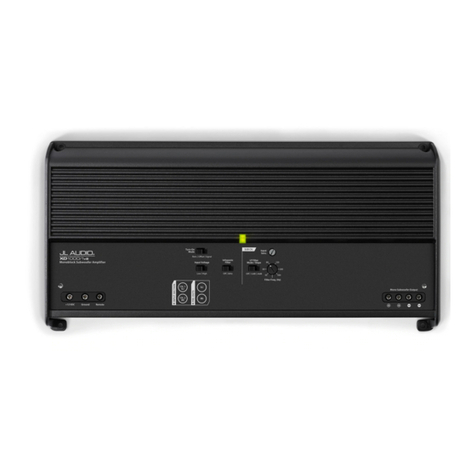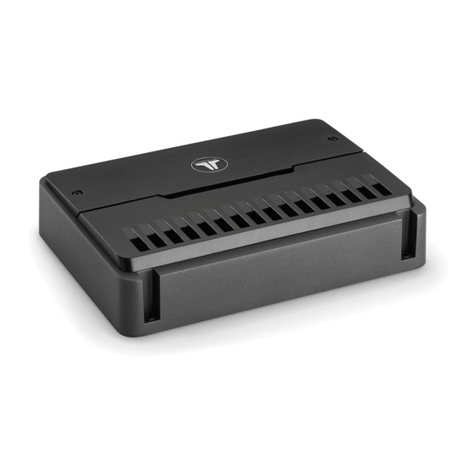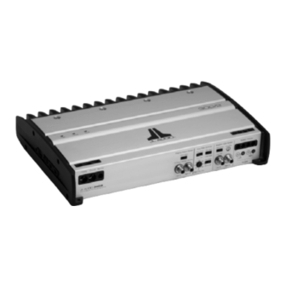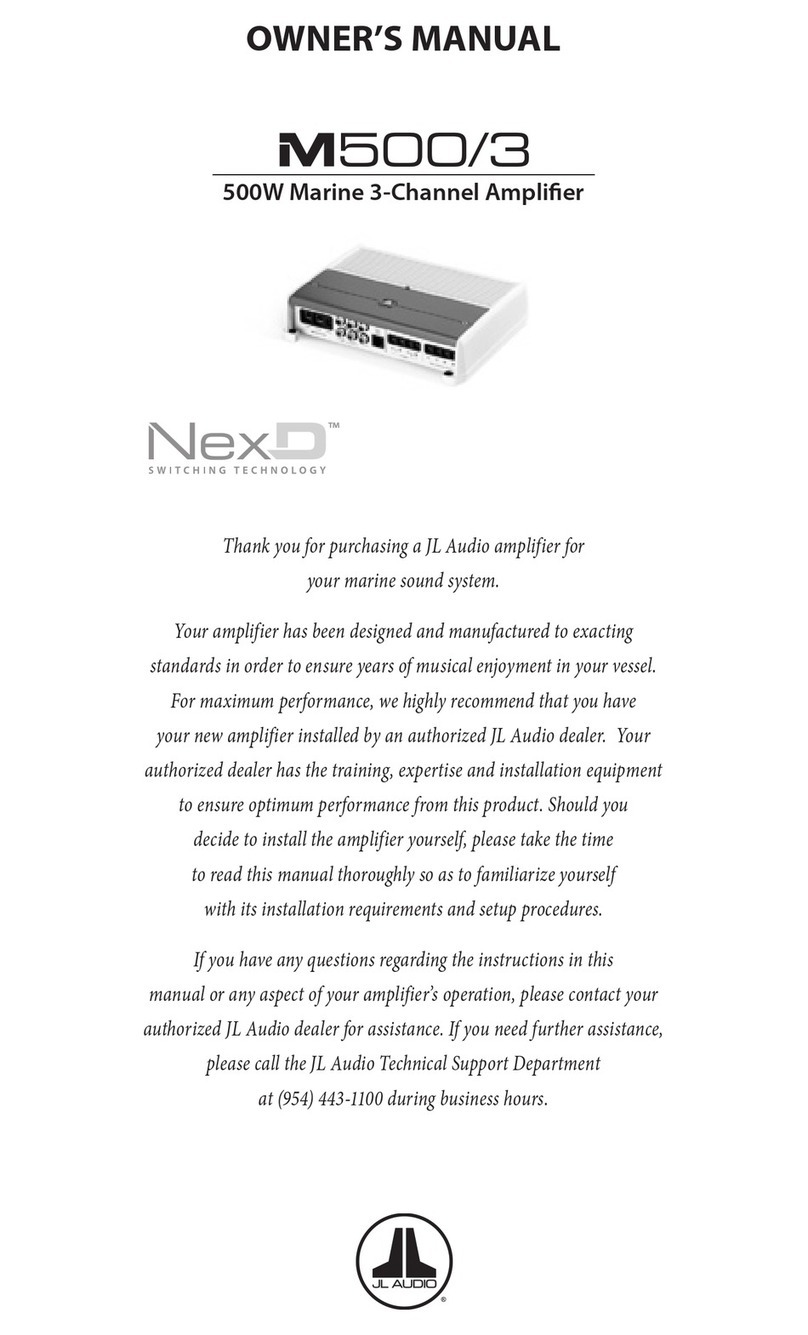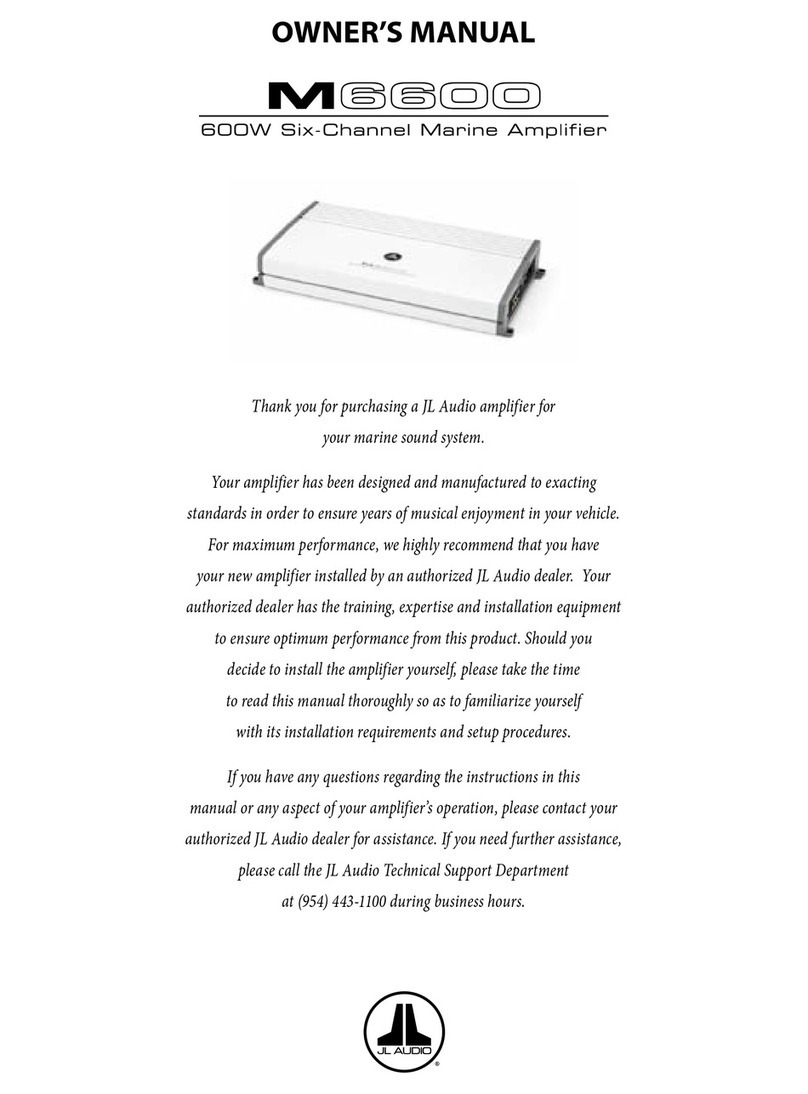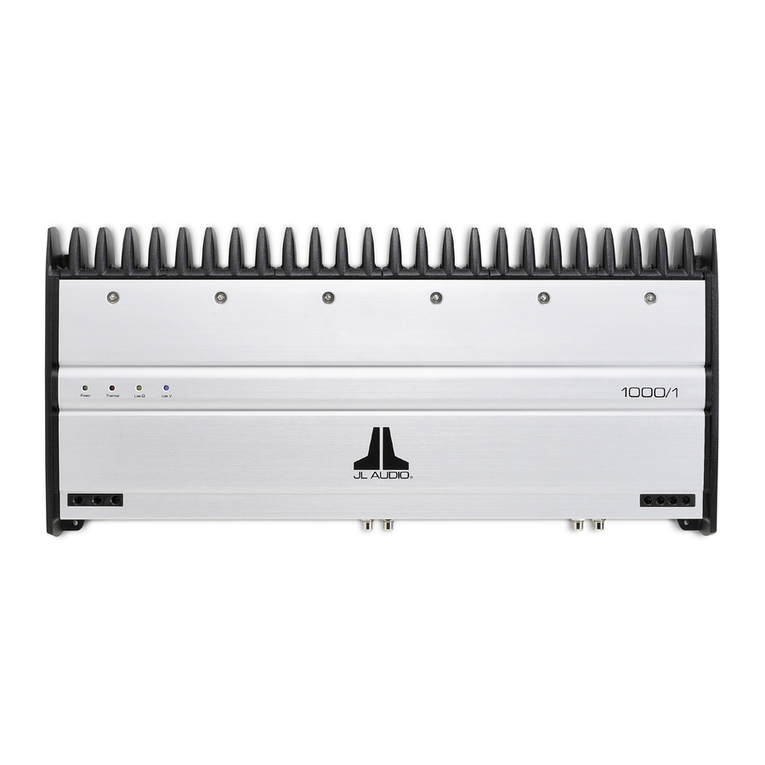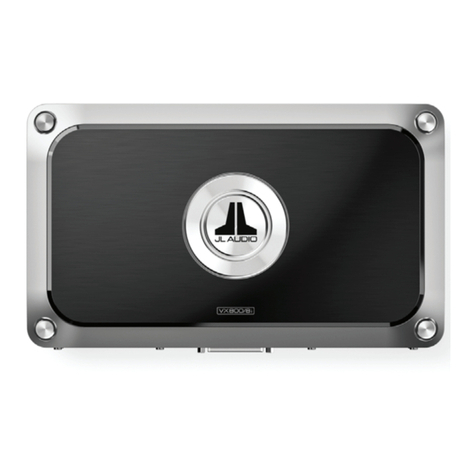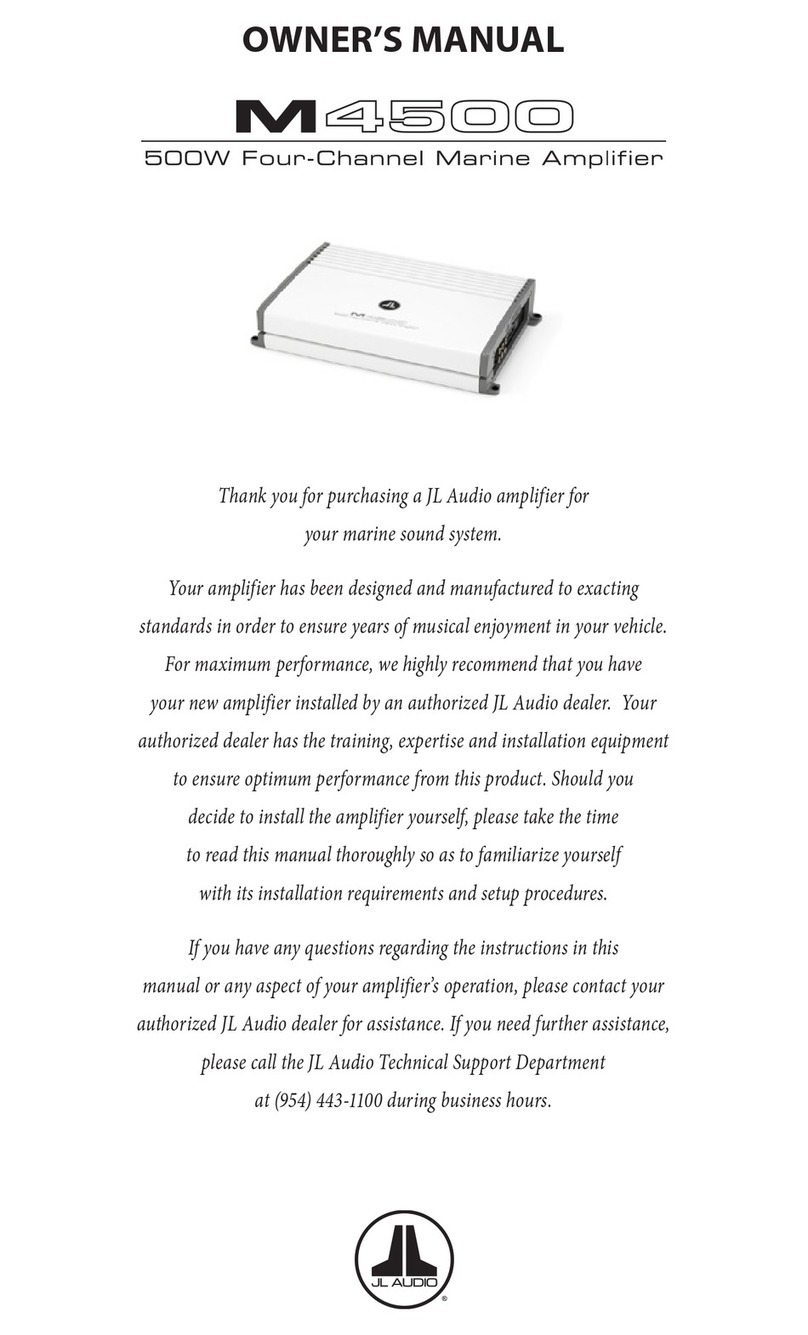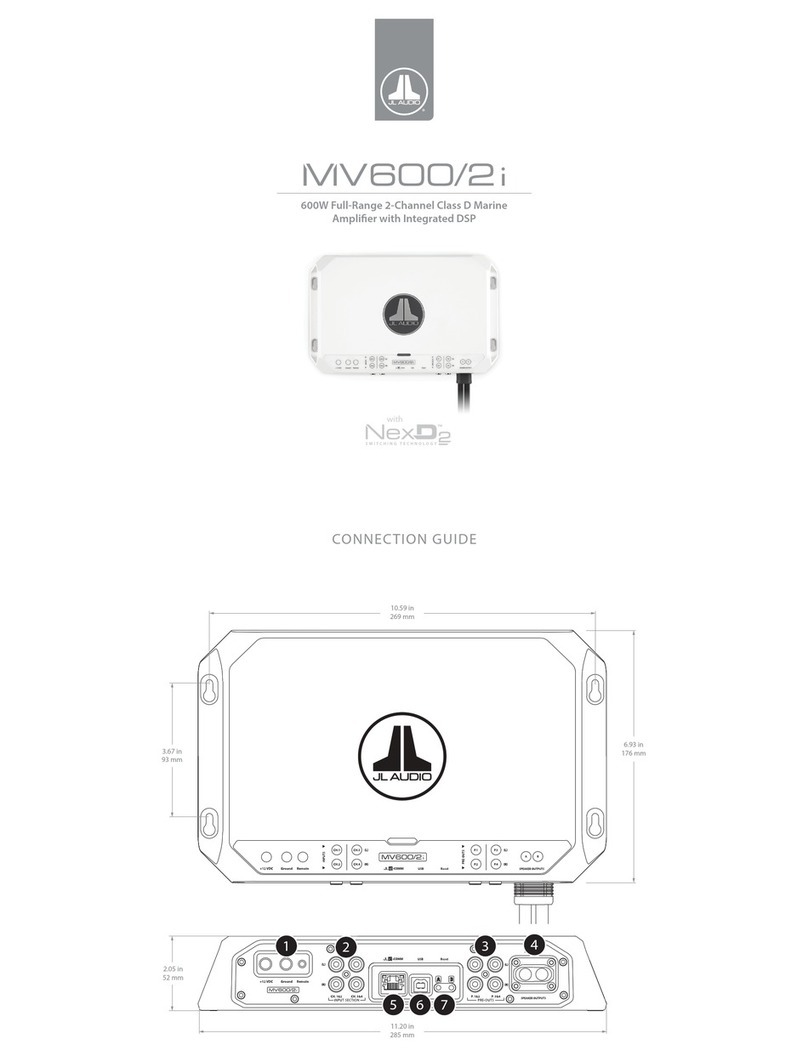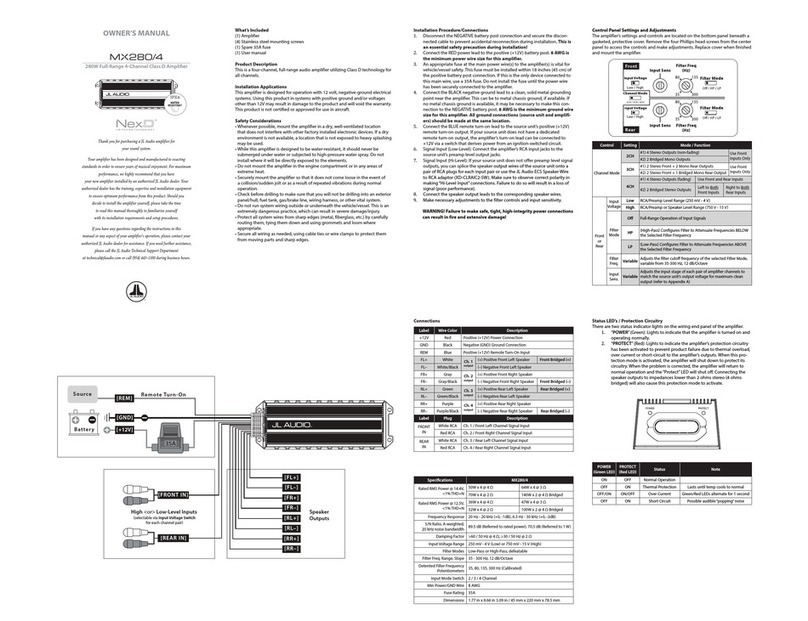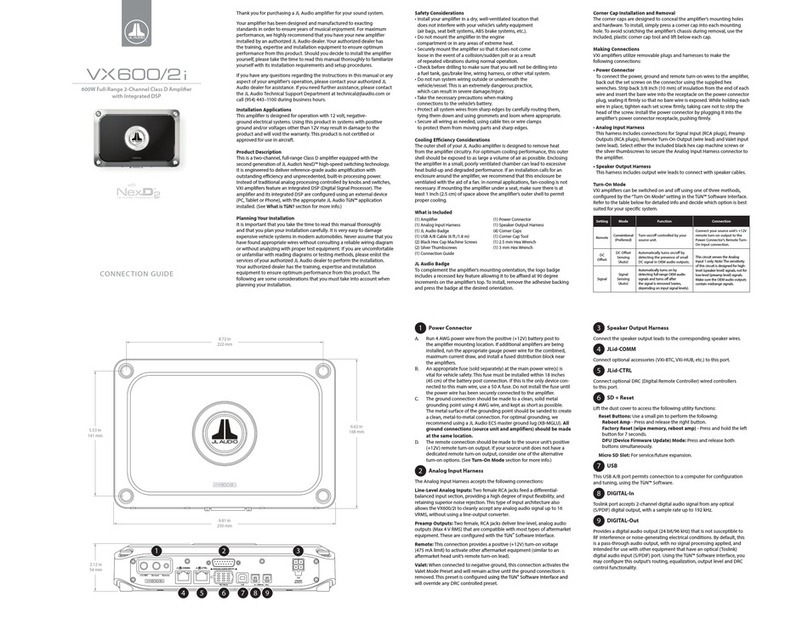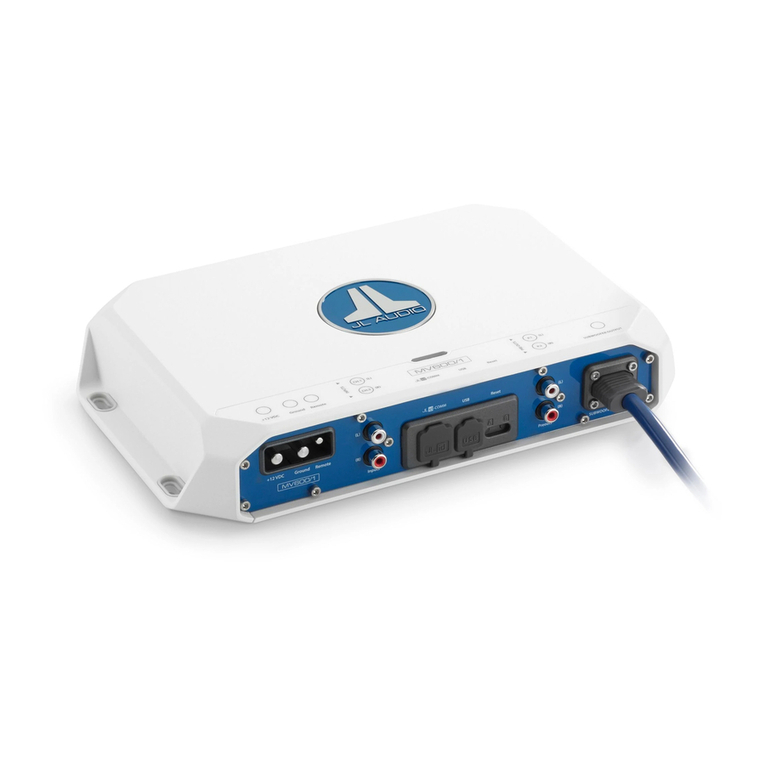
Limited
Warranty-
Amplifiers
(USA)
JL
Audio
warrants this
product
to
be free
of
defects
in materials and
workmanship
for
a
period
of
two
(2)
years
from
the
original date
of
purchase.
This
warranty
is
not
transferrable and applies
only
to
the
original purchaser
from
an
authorized
JL
Audio dealer. Should service be necessary
under
this
warranty
for
any reason
due
to
manufacturing
defect
or
malfunction,
JL
Audio
will
(at its discretion), repair
or
replace
the
defective
product
with
new
or
remanufactured
product
at no charge. Damage caused by
the
following
is
not
covered
under
warranty: accident, misuse, abuse,
product
modification
or
neglect, failure
to
follow
installation instructions,
unauthorized
repair
attempts,
misrepresentations by
the
seller. This
warranty
does
not
cover incidental
or
consequential damages and does
not
cover
the
cost
of
removing
or
reinstalling
the
unit(s). Cosmetic damage
due
to
accident
or
normal wear and tear
is
not
covered
under
warranty.
Warranty
is
void
if
the
product's serial
number
has been removed
or
defaced.
Any applicable
implied
warranties are
limited
in
duration
to
the
period
of
the
express
warranty
as
provided
herein
beginning
with
the
date
of
the
original
purchase at retail, and no warranties,
whether
express
or
implied,
shall
apply
to
this
product
thereafter. Some states
do
not
allow
limitations
on
implied
warranties,
therefore
these exclusions may
not
apply
to
you. This
warranty
gives
you specific legal rights, and you may also have
other
rights,
which
vary
from
state
to
state.
If
you
need
service on
your
JL
AUDIO
product:
All
warranty
returns should be sent
to
JL
Audio's
Amplifier
Service Facility
freight-prepaid
through
an authorized
JL
Audio
dealer and must be
accompanied by
proof
of
purchase
(a
copy
of
the
original sales receipt). Direct
returns
from
consumers
or
non-authorized
dealers will be refused unless
specifically authorized by
JL
Audio
with
a valid return
authorization
number.
Warranty
expiration
on
products
returned
without
proof
of
purchase will be
determined
from
the
manufacturing
date code. Coverage may be invalidated
as
this date
is
previous
to
purchase date.
Non-defective
items received will
be
returned
freight-collect. Customer
is
responsible
for
shipping
charges and
insurance in sending
the
product
to
JL
Audio. Freight damage on returns
is
not
covered
under
warranty.
For Service
Information
in
the
U.S.A. please call
JL
Audio
Customer
Service:
(954) 443-1100
9:00AM
-5:30
PM
(Eastern Time Zone)
JL
Audio, Inc.
10369
North
Commerce Pkwy.
Miramar,
FL
33025
(Do
not
send
product
for
repair
to
this address)
International
Warranties:
Products purchased
outside
the
United States
of
America are covered
only
by
that
country's
distributor
and
not
by
JL
Audio, Inc.


